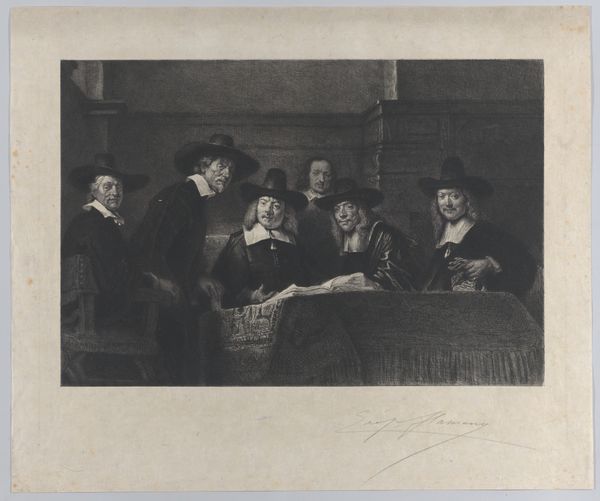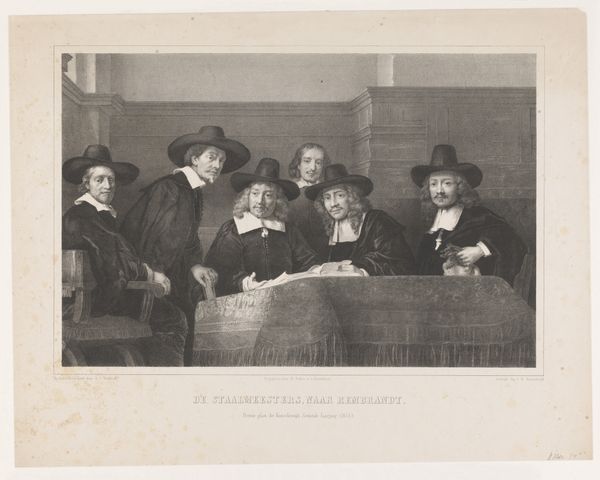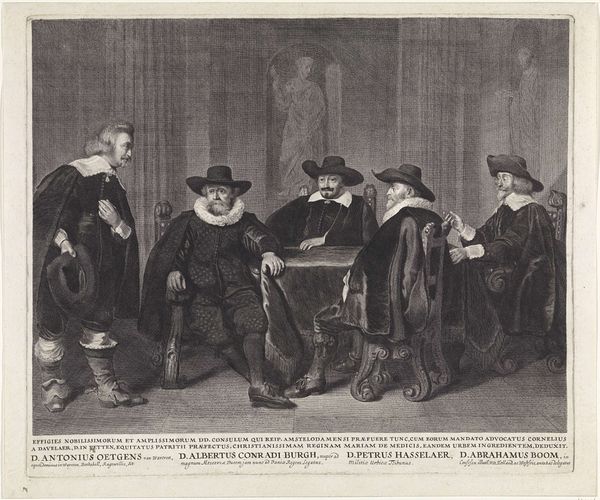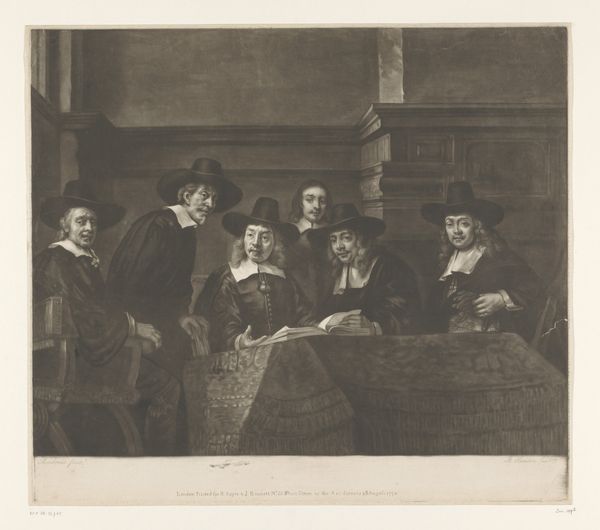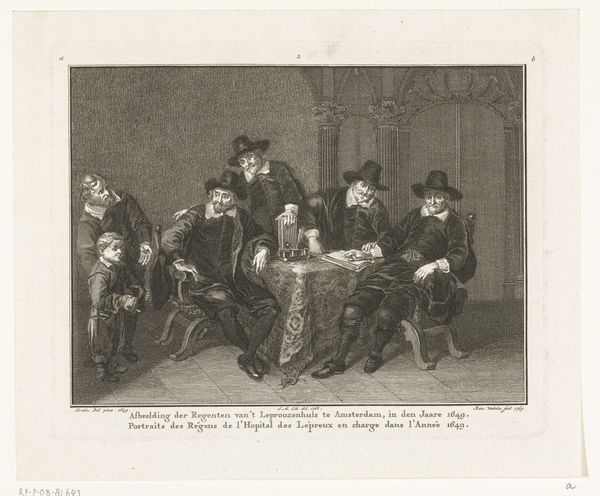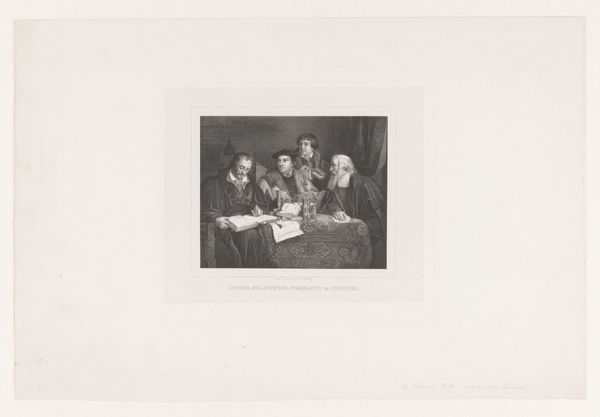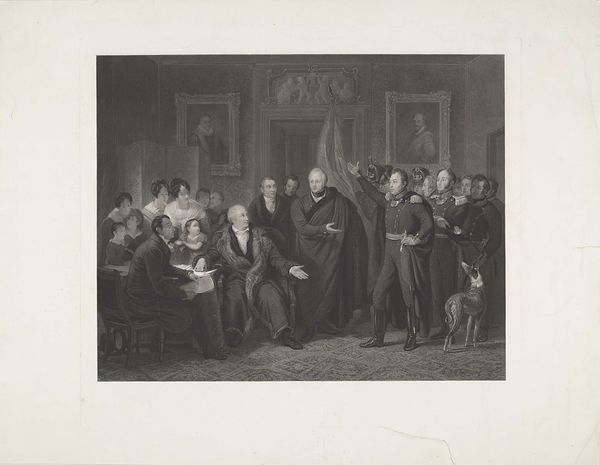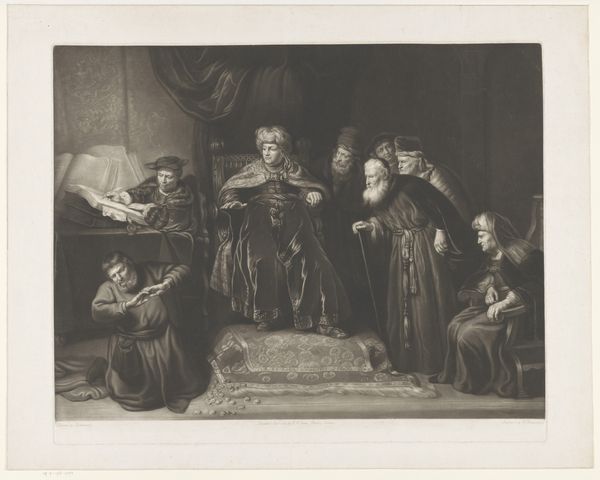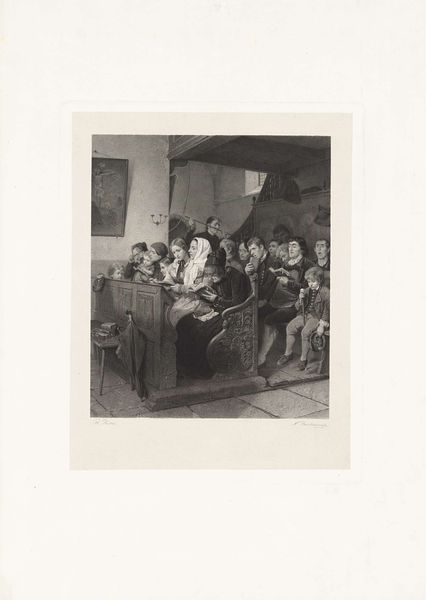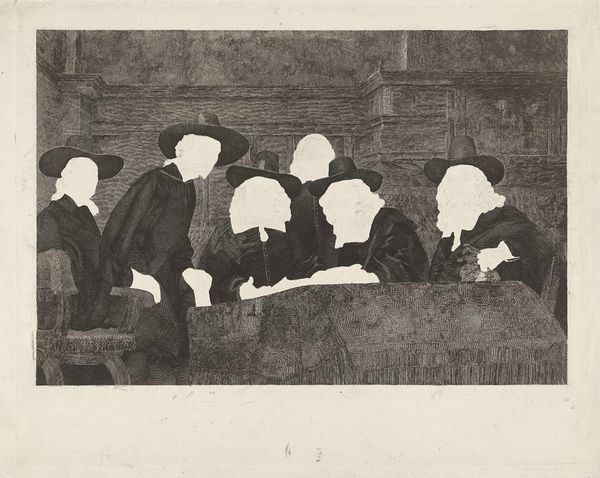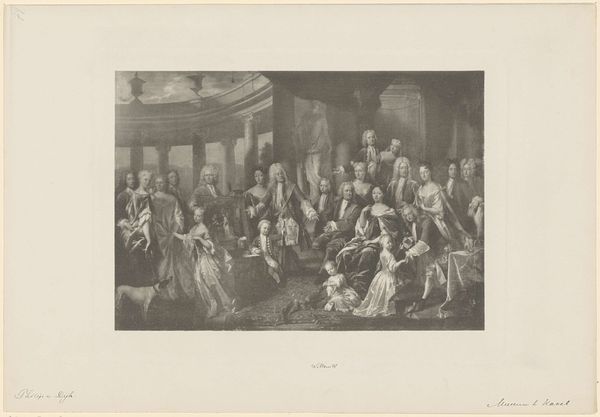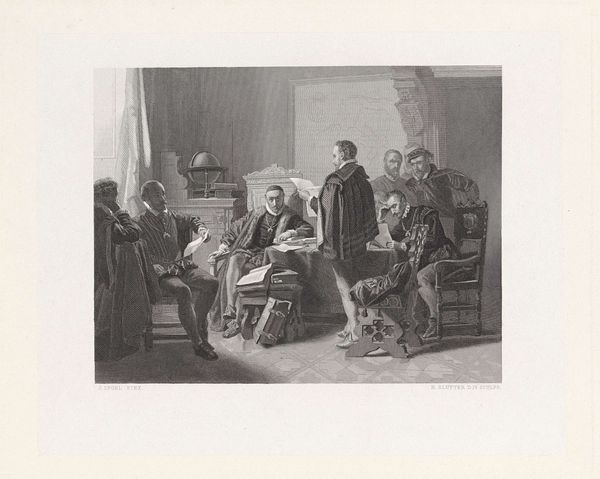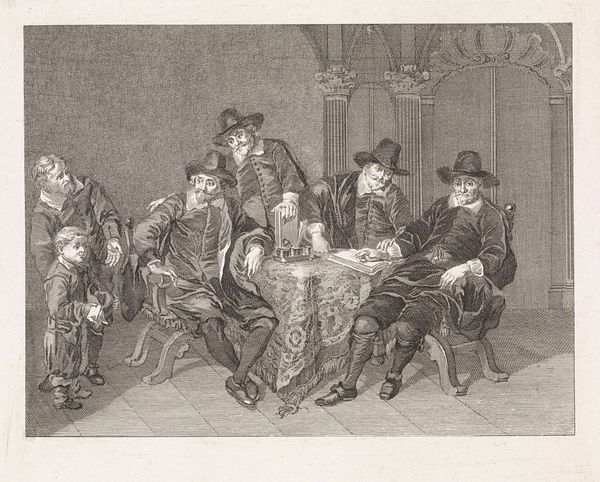
print, engraving
#
portrait
#
dutch-golden-age
# print
#
group-portraits
#
genre-painting
#
academic-art
#
engraving
Dimensions: height 465 mm, width 572 mm
Copyright: Rijks Museum: Open Domain
Curator: This print, dating from about 1846 to 1847, offers a fascinating glimpse into the world of civic governance. It’s entitled "De Staalmeesters", rendered by Henricus Wilhelmus Couwenberg after an original by Rembrandt. It captures a genre scene within the sphere of Dutch Golden Age painting and portraiture. Editor: The subdued, almost monochromatic tones of the engraving immediately give me a feeling of seriousness and gravitas. There’s a real weightiness in their gaze and attire; it seems symbolic of responsibility and authority. Curator: Absolutely. "De Staalmeesters"—"The Sampling Officials"—were responsible for assessing the quality of cloth produced in Amsterdam. Couwenberg's print invites us to consider the socio-economic structures of 17th-century Holland and their meticulous oversight. Editor: Those sober, dark clothes serve not just to distinguish them by rank, but to make them a solid group: sober, dependable. I notice the hands – those that hold papers, and those simply resting. It suggests something of their characters. They are united by this table, by a profession and perhaps some unspoken code. Curator: The symbolism is also interwoven within the context of Dutch art during this period. Group portraits were a visual way to depict civic unity and the shared values of the burgeoning merchant class. Couwenberg's rendering connects to both historical and contemporary aspirations toward representing these key societal pillars. Editor: Beyond the immediate setting, do you think Couwenberg was tapping into a more archetypal imagery here? The authority, the record-keeping—these are themes that resonate throughout cultures and histories, in many sorts of imagery. Curator: I think he understood how to capture a feeling of history and continuity, drawing on academic traditions to give resonance to the theme, using his print to emphasize enduring institutional power, long after the original “Masters” would pass away. Editor: Seeing how Couwenberg brings the subject matter from painting to engraving, and then considers those universal human themes, reminds you that art serves to transmit values as much as reflect them. Curator: A fitting observation to carry as we proceed onward, acknowledging the past even while stepping into what comes next.
Comments
No comments
Be the first to comment and join the conversation on the ultimate creative platform.
